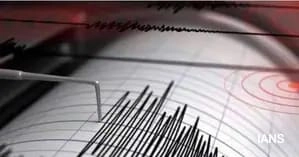A powerful earthquake measuring 8.0 on the Richter scale struck Russia, sending shockwaves through the region and triggering immediate concern among residents and authorities alike. The seismic event occurred in the early hours, when many were still asleep, causing unprecedented chaos and fear. Buildings swayed violently, and reports of structural damage began to pour in from various affected areas. Emergency services were quickly mobilized to assess the situation, provide aid, and ensure the safety of those impacted by the quake.
In the aftermath of the earthquake, a tsunami warning was issued for coastal regions, further heightening anxiety among the population. Tsunami warnings are a critical response to such significant seismic activity, as they can lead to catastrophic flooding and loss of life if not taken seriously. Authorities urged people living in coastal areas to evacuate to higher ground and remain vigilant for any updates from meteorological and geological agencies. The potential for a tsunami adds another layer of urgency to the response efforts, as communities work to protect themselves from the dual threats of earthquake damage and rising waters.
As the situation unfolds, seismologists are closely monitoring aftershocks, which are common following major earthquakes. These aftershocks can sometimes be substantial in magnitude, posing additional risks to already weakened structures and complicating rescue operations. The psychological toll on residents is also significant; many are grappling with feelings of anxiety and uncertainty as they navigate the immediate aftermath. Emergency shelters are being set up to provide refuge for those who have lost their homes, and local governments are coordinating with national agencies to ensure that resources are allocated effectively.
International aid and support may also play a crucial role in the coming days as the scale of the disaster becomes clearer. Countries around the world often extend their assistance in the wake of such natural disasters, offering financial aid, rescue teams, and supplies to help those in need. The resilience of the affected communities will be tested, but history has shown that people come together in times of crisis to support one another. As the recovery process begins, the focus will be on rebuilding lives, restoring infrastructure, and preparing for future seismic events, ensuring that safety measures are enhanced to mitigate the impact of any potential disasters moving forward.




